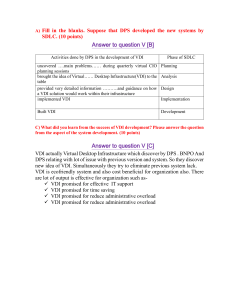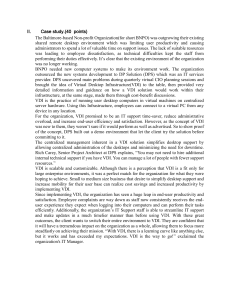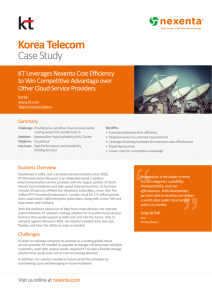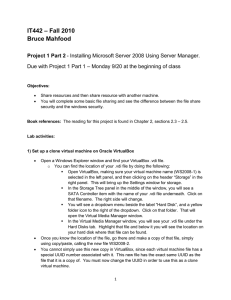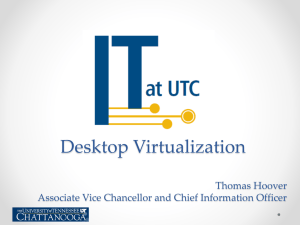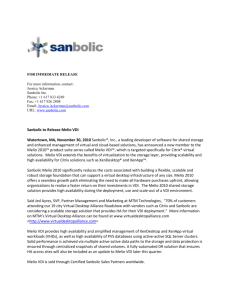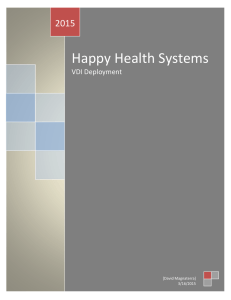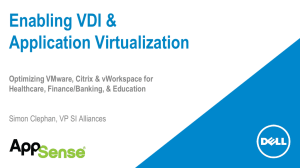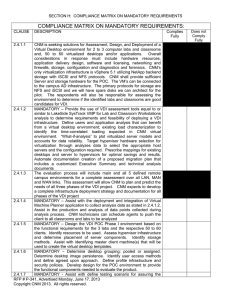Software-Defined - Dell Desktop Virtualization Forum
advertisement
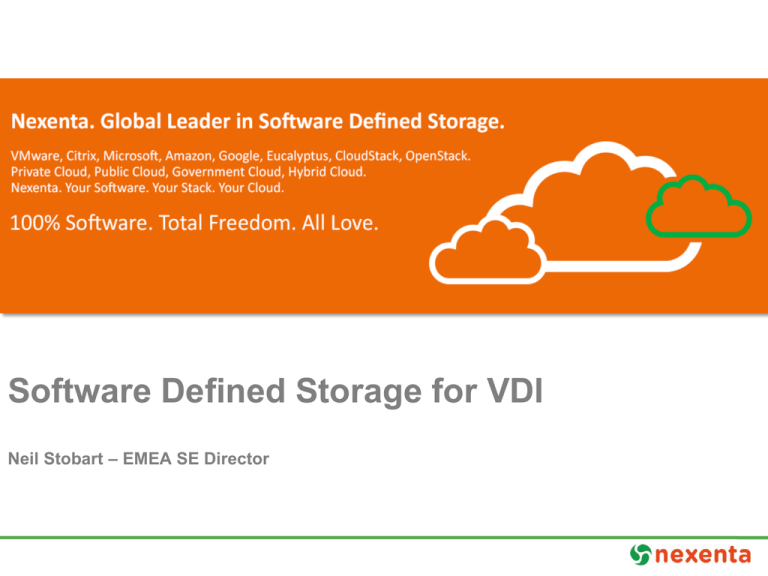
Software Defined Storage for VDI Neil Stobart – EMEA SE Director Market Trends – Data Explosion & Shrinking Budgets Workloads, IT Budgets and Trends Source: 2014 – Company, Gartner, IDC and Wall Street research. 2 Nexenta Company Timeline 2014 2013 5,000 customer deployments 2012 2008 400 PB Under Management NexentaStor 3.0 1st 2005 Sun Microsystems open sources ZFS POs from Stanford NexentaStor 1.0 Scale-up unified block & file services on any x86 hardware First Cinder integration with OpenStack Essex 10 patents in play 3 NexentaStor 3.1 Dell and SuperMicro Reference Architectures NexentaConnect SDS for VDI 1st patent 20 in play Tarkan Maner joins as CEO 900 PB Under Management NexentaStor 4.x Enterprise class SDS NexentaConnect Horizon & XenDesktop On ESX NexentaEdge 1.0 Scale-out object NexentaFusion 1.0 Unified analytics and orchestration 3 patents 30 in play Software-Based or Software-Defined? Software Based Software Defined Stack Specific … All storage hardware vendors are software based Software-Based is about technology – good for vendors – Software used to justify high margins on systems built with standard x86 hardware – Exact same hardware can often be acquired off the shelf Software-Defined is about business model – good for customers – Standardize on software and make x86 hardware vendors compete – Allows customers to procure storage with server like economics Nexenta is the only provider of SDS for all stacks and all workloads 4 Comprehensive Software Defined Storage Portfolio Unified analytics and orchestration Single pane of glass for entire storage infrastructure * * Storage Services for virtualized infrastructure VMware Virtual SAN, Horizon and Citrix XenDesktop * Future * 5 Scale-up , block and file Unified Storage Scale-out object, block and file storage Enterprise Apps Cloud backend and unstructured data repositories OpenStack Swift Amazon S3 Next Gen Cloud & Big Data Apps * VDI Deployment Challenges Storage Performance considerations • Need equal or better performance than PC • Requires low latency to deliver good end user experience • High Write IOPS due to user profile updates need more resources than high read requirements • Boot/login storms necessitate sizing for overall peak performance requirements therefore need more spindles High performance storage required to support workload means that storage cost consideration severely impact decision for VDI deployment Monitoring • Storage Calibration – ensuring storage resources are applied for the right desktops • No insight into performance at the desktop level Different categories of user require different levels of performance therefore important to understand when and where additional storage resources are required to ensure good end user experience 6 How you can save money with Dell/Nexenta Citrix Ready Capacity Validation Program – Benchmark 750 Desktop Solutions 7 Thank you

